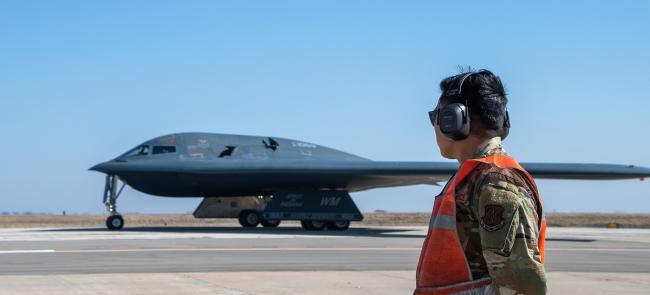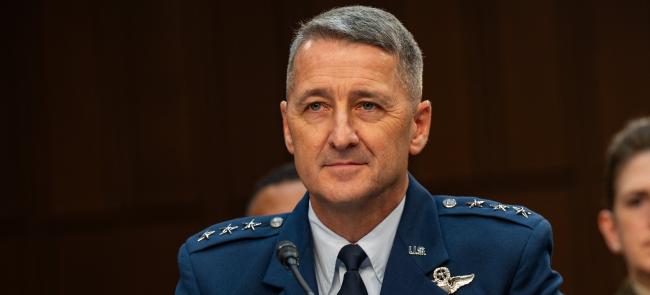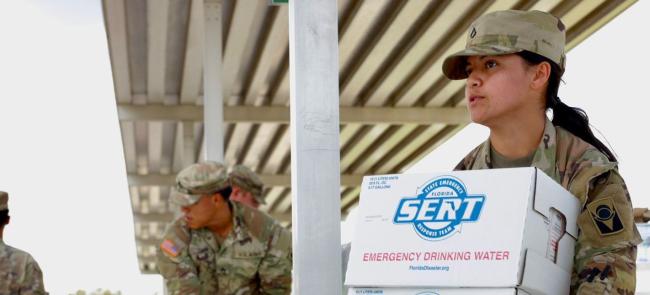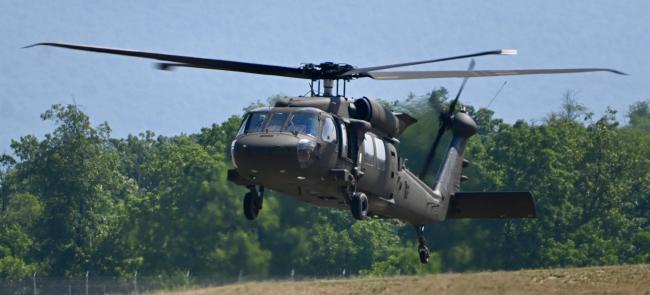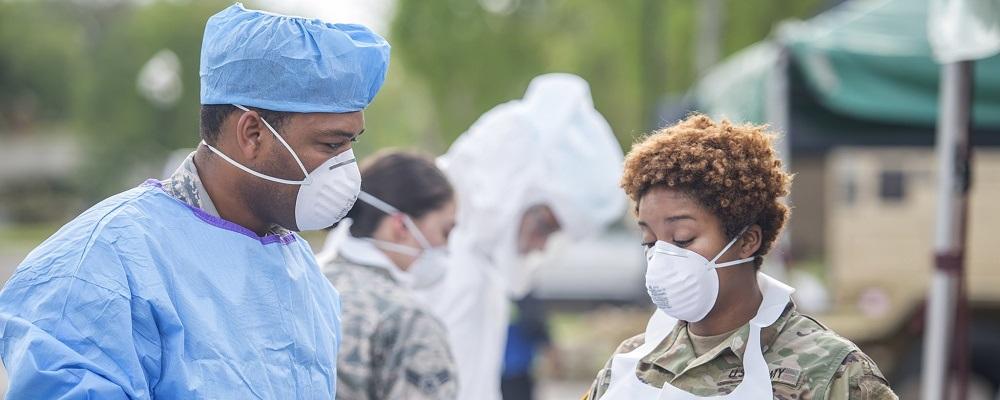
More than 9,000 National Guardsmen are providing assistance during the ongoing novel coronavirus pandemic, according to Guard leaders.
The soldiers and airmen are delivering food to hard-hit communities, manning call centers, providing critical protective equipment training, providing support and symptom screening for testing facilities and collecting testing samples, among other missions related to the COVID-19 outbreak.
Gen. Joseph Lengyel, the chief of the National Guard Bureau, said the number of activated Guardsmen is likely to rise in the coming days and weeks.
“This is a historic event, and it will require a historic response,” he said.
And now, at least three states will have added flexibility to speed their response to the virus and potentially save lives.
On Sunday, President Donald Trump approved requests to activate Guardsmen under Title 32 orders, which provides federal funding but keeps command and control with the state governor and adjutant general.
The president also waived Stafford Act requirements to allow the federal government to cover all costs related to the Guard response in support of the pandemic in the states of California, New York and Washington.
“Through FEMA, the federal government will be funding 100% of the cost of deploying National Guard units to carry out approved missions to stop the virus while those governors remain in control,” Trump said. “So the governors, locally, are going to be in command, and we’ll be following them and we hope they can do the job, and I think they will.”
Lengyel said he believed the order could eventually be expanded to support other states.
The Guard’s response to the pandemic has grown quickly in the past week. Just over 2,000 Guardsmen had been activated as of Thursday, and that number had grown to more than 8,000 as of Monday morning.
Lengyel said the cost of 1,000 activated National Guardsmen was between $8 million and $9 million per month. Mobilizing Guardsmen under Title 32 also provides health care benefits, retirement points and credit towards the GI Bill for Guardsmen.
NGAUS and the National Governors Association have lobbied for the White House and Congress to support the mobilization of Guardsmen under federally funded Title 32 orders. Most states have used state active duty orders to mobilize Guardsmen.
“While SAD is an effective way to quickly mobilize the National Guard in absence of a federal emergency declaration, it is not intended for the magnitude of this type of disaster, one that affects all 54 states, territories and the District of Columbia,” said retired Brig. Gen. J. Roy Robinson, the NGAUS president, in letters sent last week.
In addition, the NGAUS legislative staff helped educate congressional staffers on the different statuses under which the Guard can be called for domestic response and the efficiency and flexibility of Title 32.
State Active Duty is also 100% state funded, meaning states are financially discouraged from mobilizing critical assets.
In addition to health, education and retirement benefits, the use of Title 32 would also allow Guardsmen access to military hospitals, federal worker’s compensation and death gratuites.

